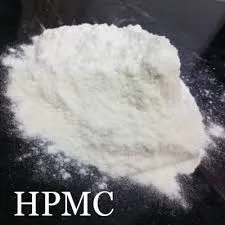
ធ្នូ . 25, 2024 01:40 Back to list
methyl hydroxyethyl cellulose mhec
Exploring Methyl Hydroxyethyl Cellulose (MHEC) Properties, Applications, and Benefits
Methyl Hydroxyethyl Cellulose (MHEC) is a derivative of cellulose, a natural polymer abundant in plants. This particular cellulose ether is characterized by its unique properties and versatility, making it a valuable ingredient in various industries. As a non-ionic and water-soluble compound, MHEC has garnered attention in fields such as construction, pharmaceuticals, food, and personal care.
Chemical Structure and Properties
MHEC is produced by chemically modifying cellulose through the introduction of methyl and hydroxyethyl groups. This alteration enhances its solubility and thickening ability while retaining the basic cellulose structure's functionality. The degree of substitution of these groups defines its properties, including viscosity, gel formation, and water retention capacity.
One of the most notable characteristics of MHEC is its ability to form stable gels upon hydration. This gel-like consistency is crucial for applications requiring controlled thickening and stabilizing effects. Additionally, MHEC is resistant to temperature fluctuations and has excellent water retention properties, which assists in maintaining moisture in various formulations.
Applications in the Construction Industry
In the construction sector, MHEC is widely used as a thickener and binder in cement and mortar-based products. It enhances the workability of formulations, allowing for better adhesion and application on different surfaces. MHEC significantly improves the performance of tile adhesives, plasters, and grouts by enhancing their viscosity, preventing sagging, and ensuring even distribution during application.
Moreover, MHEC contributes to the open time and adjustability of compounds, allowing workers to correct their application without compromising the integrity of the material. Its water retention properties also ensure that the substrate remains moist, facilitating proper curing and reducing the likelihood of cracking.
Pharmaceutical Applications
methyl hydroxyethyl cellulose mhec

In pharmaceuticals, MHEC finds utility as an excipient in various dosage forms, including tablets, capsules, and topical applications. Its ability to create hydrophilic gels is beneficial for controlled drug release, enhancing the bioavailability of active ingredients. MHEC is particularly effective in sustained-release formulations, where it regulates the release rate of the drug over time.
Additionally, due to its non-toxic nature and biocompatibility, MHEC is suitable for use in oral and topical applications. It acts as a stabilizing agent in suspensions and emulsions, ensuring uniformity and improving the product's overall stability.
Food and Personal Care Applications
In the food industry, MHEC is used as a food additive to enhance texture and stability in various products. It acts as a thickener and emulsifier in sauces, dairy products, and baked goods, contributing to mouthfeel and product consistency. The FDA has recognized MHEC as generally recognized as safe (GRAS), making it a preferred choice for food manufacturers looking to enhance the sensory qualities of their products.
In personal care products, MHEC is valued for its film-forming properties, which contribute to the texture and moisturizing characteristics of lotions, creams, and gels. Its ability to retain moisture makes it a popular ingredient in skincare products, promoting hydration and improving the overall efficacy of formulations.
Environmental Considerations
As a cellulose-based product, MHEC is inherently biodegradable and environmentally friendly compared to synthetic alternatives. Its renewable nature aligns with the increasing demand for sustainable and eco-friendly materials across various industries. By incorporating MHEC into formulations, manufacturers can reduce their environmental footprint while still delivering high-performance products.
Conclusion
Methyl Hydroxyethyl Cellulose (MHEC) is a multifunctional ingredient that plays a crucial role in numerous industries, including construction, pharmaceuticals, food, and personal care. Its unique properties, such as water retention, gel formation, and biocompatibility, contribute to its widespread adoption. As industries continue to seek sustainable and effective solutions, MHEC stands out as a valuable resource, promising to deliver performance while embracing eco-friendly principles. As research and development in this field progress, the potential uses and benefits of MHEC are likely to expand, solidifying its position as a cornerstone material in modern formulations.
-
Versatile Hpmc Uses in Different Industries
NewsJun.19,2025
-
Redispersible Powder's Role in Enhancing Durability of Construction Products
NewsJun.19,2025
-
Hydroxyethyl Cellulose Applications Driving Green Industrial Processes
NewsJun.19,2025
-
Exploring Different Redispersible Polymer Powder
NewsJun.19,2025
-
Choosing the Right Mortar Bonding Agent
NewsJun.19,2025
-
Applications and Significance of China Hpmc in Modern Industries
NewsJun.19,2025







